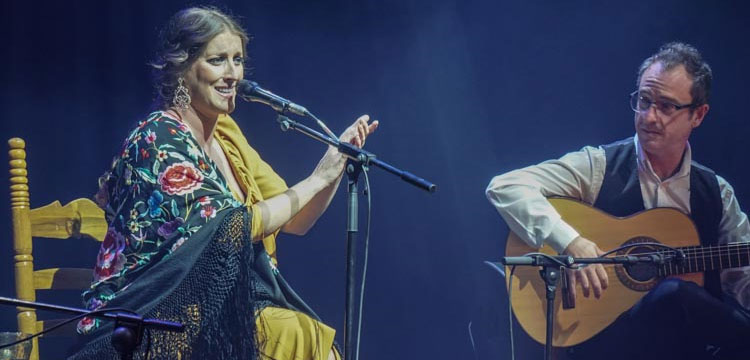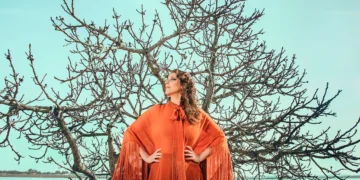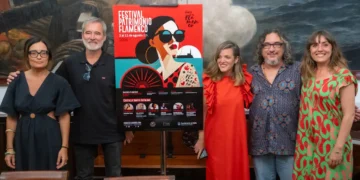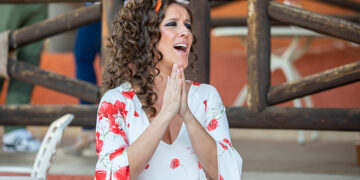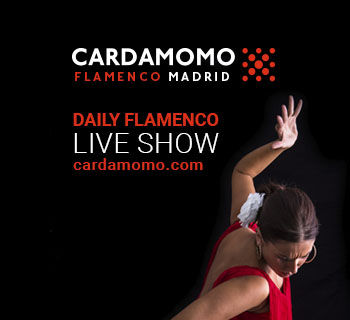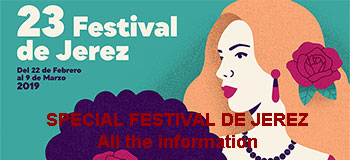Argentina, voice; José Quevedo “Bolita” | Guitarist; Eugenio Iglesias | Guitarist; Torombo |Back-up and rhythm Los Mellis | Chorus and rhythm; José Carrasco | Percussion
José Manuel Gómez Gufi
It’s a pleasure to see a theater like the Rialto on Madrid’s Gran Vía nearly full to see an artist like Argentina, and it’s good vibes when a little grandmother with difficulties getting around stops and winks when she hears a terrific and very flamenco version of “María la Portuguesa”. The lady was caught during the last encore right by the door, and she wasn’t about to lose a single note.
Argentina María López Tristancho (Huelva 1984) started out with some bulerías, followed by guajiras “La Vida del Artista” which is the title of her last record. Argentina dresses as if she were from another era, perhaps that helps to identify her singing which is on the traditional side. The thing is she commented that the important thing for her was “to sing in Madrid, a city which has seen all the greats of flamenco”. She forgot that some of those people were from Madrid, and she said she’d received an email from a young man prepared to ask his girlfriend to marry him. These things are common in the football fields of the USA, but infrequent in flamenco, and Argentina choose an appropriate piece. A happy young man was heard to say “gracias!” “Did she accept?” the singer asked, in case she would have to push up the soleá. Then she sang alegrías preceded by “me voy pa Cádiz” and it was immediately suggested she should do some Huelva songs.
Then it was the musicians’ turn, and guitarist José Quevedo “Bolita” offered a brutal lesson in speed in compás with the help of the Mellis. Something like hard-core flamenco with a greater emphasis on rhythm than on the musical variations. Where did we hear something similar? Exactly. On Rosalía’s record (Di mi Nombre), and the Mellis are also there.
But Argentina is more conventional when it comes to wardrobe, and she appeared with a glittery tunic (Rocío Jurado era) that seemed not to commit one way or another.
She got into the tango “Afiche”, and did so with no trace of an accent from here or anywhere else. Then she interpreted the fado “Extranha Forma de Vida”, which she sang with an Amalia Rodrígues accent, with the same big voice of the Portuguese singer who so fascinated flamenco fans back in the 1950s, and who visited Badajoz in search of Porrinas.
The way she interprets those two “alternate flamenco” pieces probably gives a clue about her way of delivering flamenco on the side of vocal excellence. Finally we got to her hometown, and she requested the presence and voice of Fran Fernández who composed the hymn “Huelva Suena Diferente” which the two laced with fandangos, and there Argentina got the audience involved to chime in with the verse: “Calle Real del Alosno”.
And after due applause, the artists crossed the theater for the photo-shoot and to please fans.
Videos:
Fotografías:
Video & fotos: Rafael Manjavacas
Discover more from Revista DeFlamenco.com
Subscribe to get the latest posts sent to your email.


